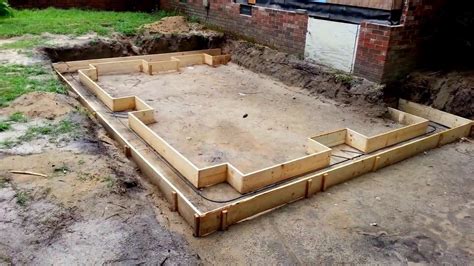Transform Your Foundation with Added Footings: A Comprehensive Guide
Adding footings to an existing foundation is a significant undertaking, often necessary to address structural issues, increase load-bearing capacity, or adapt to changing soil conditions. This guide will explore the process, benefits, and considerations involved in bolstering your foundation with added footings. We'll delve into the various types of footings, the factors influencing their selection, and the crucial steps to ensure a successful project.
Why Add Footings to an Existing Foundation?
Several factors might necessitate adding footings to your existing foundation. These include:
- Settlement Issues: Uneven settlement, where parts of the foundation sink more than others, can lead to cracks in walls, sloping floors, and compromised structural integrity. Adding footings can help redistribute the load and stabilize the structure.
- Increased Load: Renovations, additions, or changes in usage (like converting a garage into a living space) can increase the load on the foundation, requiring additional support.
- Soil Instability: Shifting soil, expansive clay, or other soil problems can weaken the foundation over time. Added footings provide a stronger base to withstand these conditions.
- Foundation Repair: Addressing existing foundation damage often involves installing new footings to support the repaired sections.
Types of Added Footings
There are several types of footings that can be added to an existing foundation, each suited to different situations:
- Underpinning: This involves excavating under the existing footing and installing new, deeper footings to provide additional support. This is often used for significant settlement issues or weak soil conditions.
- Pier and Beam Foundation: If the existing foundation is inadequate, a pier and beam foundation can be added, creating a new support system below the existing structure. This is a more extensive project.
- Helical Piers: These are screw-like piles that are driven deep into the ground to provide a strong and stable foundation. They are ideal for challenging soil conditions and minimizing excavation.
- Mini Piles: Similar to helical piers, mini piles are smaller diameter piles, often used in confined spaces where larger equipment cannot easily access.
What are the benefits of adding footings to an existing foundation?
Adding footings offers several key advantages:
- Increased Stability: Strengthened foundation reduces the risk of future settlement and structural damage.
- Improved Load Capacity: Supports heavier loads from renovations or increased usage.
- Enhanced Durability: Extends the lifespan of your structure and protects against future problems.
- Correction of Existing Issues: Addresses uneven settlement, cracks, and other foundation problems.
What factors influence the choice of added footings?
The selection of appropriate added footings depends on several critical factors:
- Soil Conditions: The type of soil and its bearing capacity are crucial in determining the suitable footing type.
- Extent of Damage: The severity of foundation problems will dictate the scale and type of intervention.
- Accessibility: Space constraints and access to the foundation will influence the feasibility of different options.
- Budget: The cost of different footing types varies significantly.
What are the steps involved in adding footings to an existing foundation?
Adding footings is a complex process that typically involves:
- Site Assessment: A thorough inspection to determine the extent of the problem and soil conditions.
- Design and Engineering: Creation of detailed plans and specifications for the added footings.
- Excavation: Carefully removing soil to create space for the new footings.
- Footing Installation: Installing the chosen footing type, ensuring proper depth and support.
- Backfilling and Compaction: Filling the excavated area and compacting the soil to ensure stability.
- Structural Monitoring: Regular monitoring to ensure the effectiveness of the added footings.
Adding footings to an existing foundation is a significant undertaking that demands expertise and precision. Always consult with qualified structural engineers and experienced contractors to ensure the project's success and safety. Improperly installed footings can exacerbate existing problems, so professional guidance is paramount. Remember, preventative maintenance and regular inspections can help detect foundation issues early on, potentially preventing the need for such extensive repairs.

